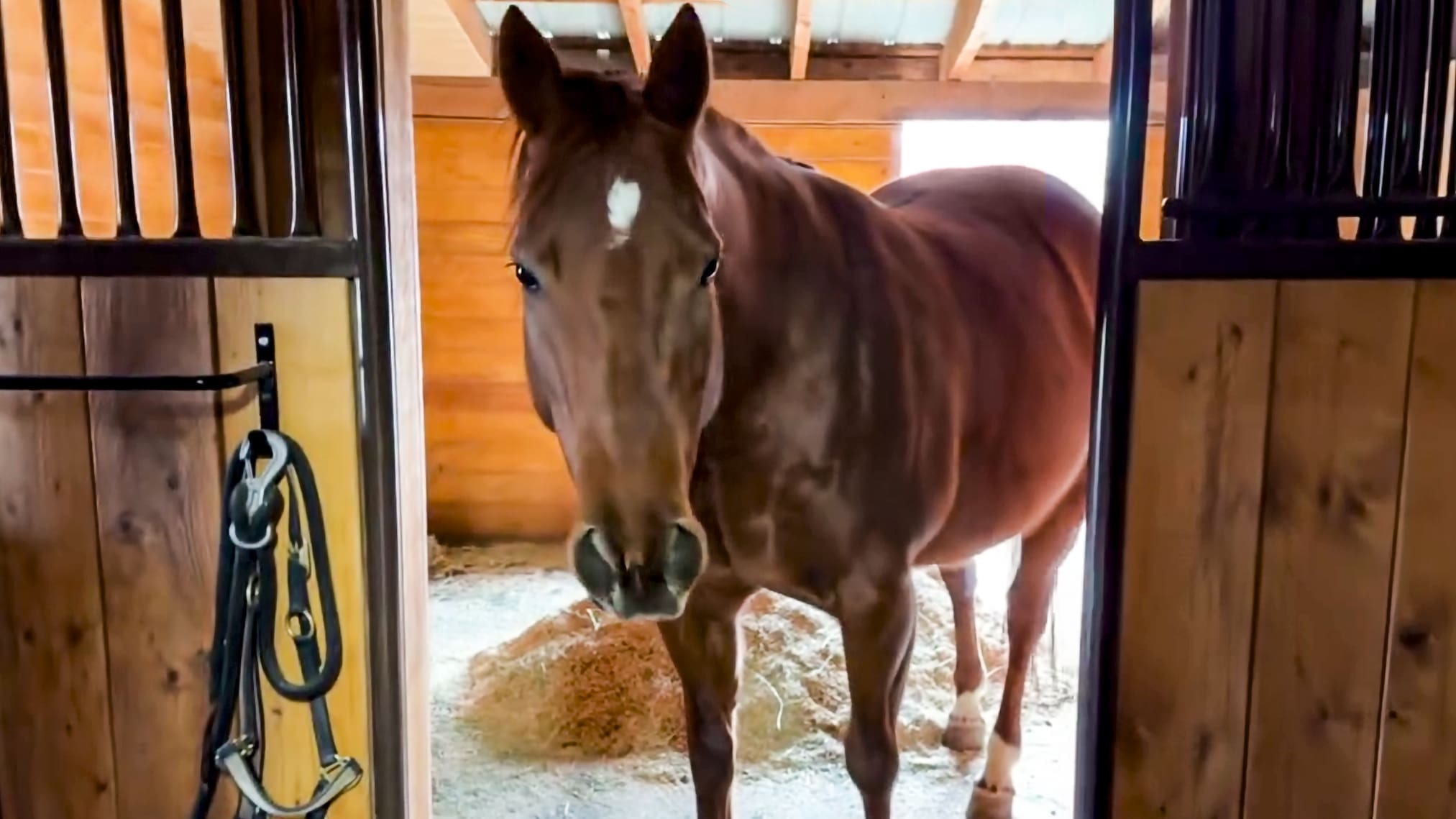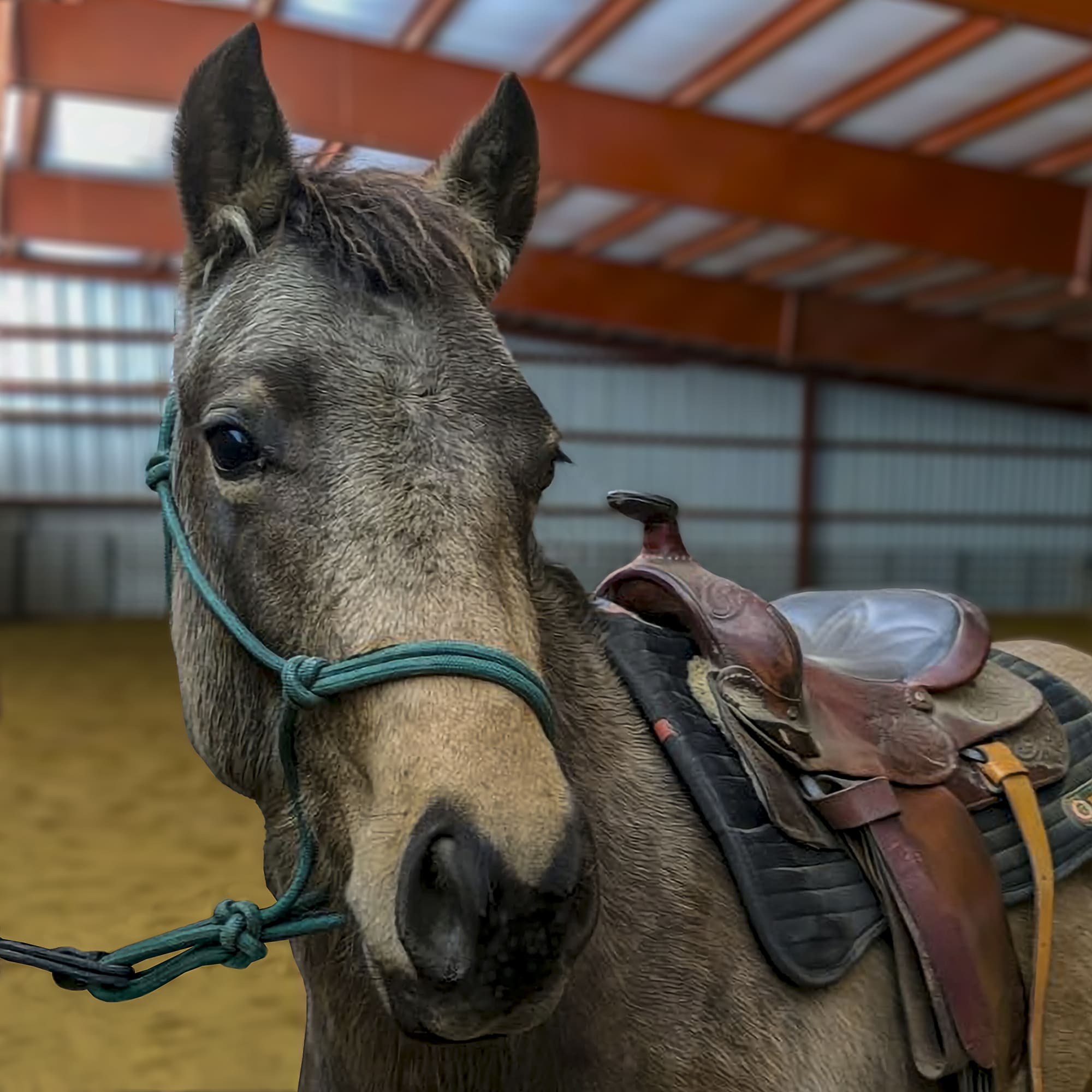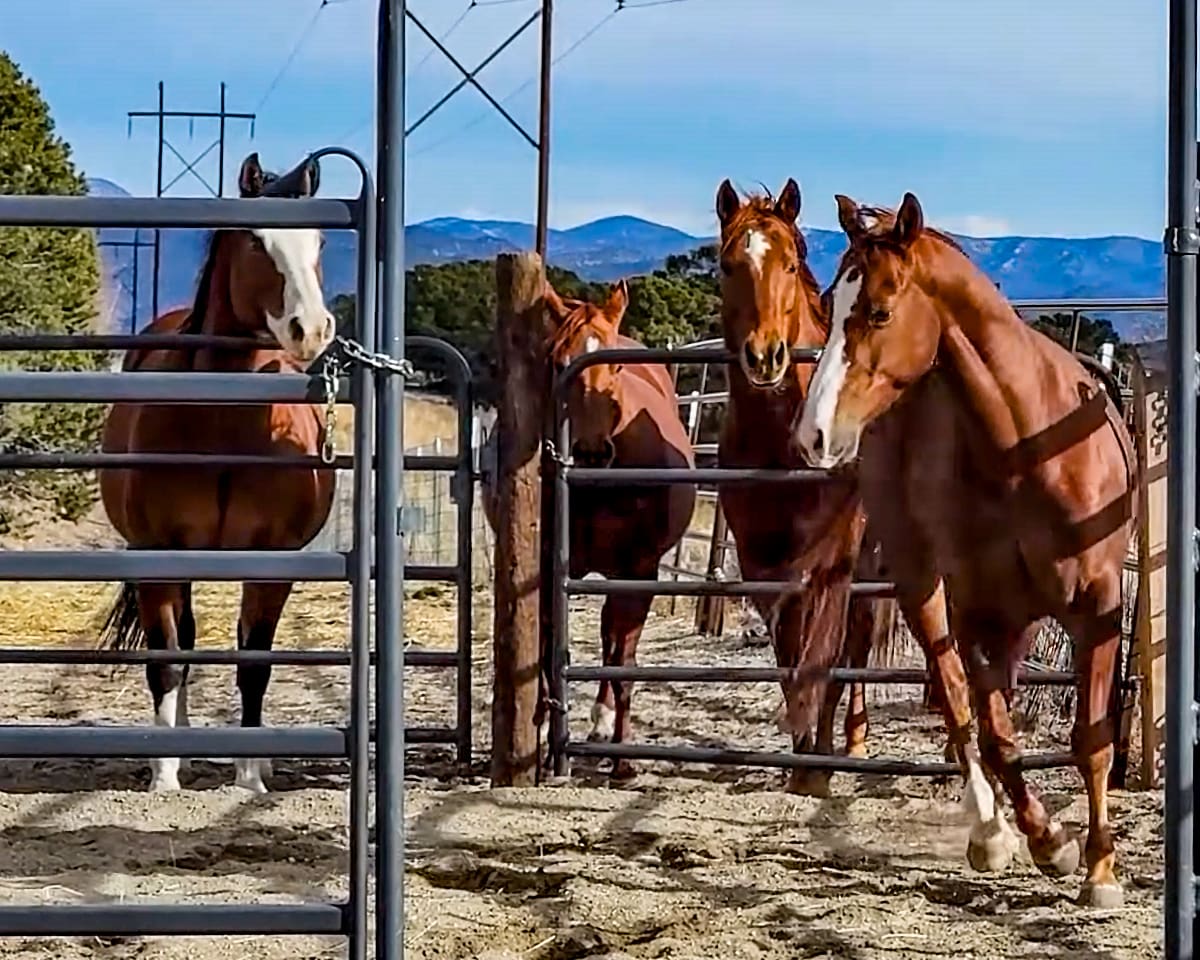
When a horse’s training is either lacking or confused, we often talk about going “back to basics.” Last month, I talked about basic training from the ground—and how important it is to have a well-mannered, attentive and cooperative horse on the ground—before moving up to training under-saddle. If being on the ground with the horse is a harrowing experience, why on earth would I want to ride him?
Assuming you’ve got your horse squared away from the ground, let’s look at what going back to square one means in mounted training. Horses may have this need for a variety of reasons, and consequently, my focus may be different too. But we can rely on the methodology of classical training for a sure-fire recipe for success. After all, it’s worked for thousands of years. I’d like to introduce you to three imaginary horses and show you what each step of the journey looks like, when going back to square one with a saddle horse.
I’m purposefully leaving out abused and traumatized horses from this back-to-basics discussion. Traumatized or psychologically damaged horses are special cases and their training plan needs to be customized entirely for the needs of that horse, given his individual level of fear, aggression and emotionality. Obviously, these horses need time and patience, and their volatility may make them more dangerous to handle. If you’re working with this type of horse, you should get expert, hands-on help.
What
Horses are We Talking About?
A horse might be completely uneducated and inexperienced, like the clean slate
of a colt or filly that’s never been ridden. He/she knows nothing about being
ridden, balancing a rider, rating speed, responding to cues or what is
required. He doesn’t even have a reason to dislike being ridden or think of it
as drudgery yet. This is the easiest kind of horse to train, because he hasn’t
learned any wrong things yet. We’ll call this horse, “Junior.”
Another horse for which back-to-basics training would be useful, is a horse that is “broke” but not trained. He’s fully accustomed to being saddled, mounted and ridden, but he never went to high school. Maybe he’s a ranch horse or trail horse, but he’s been well-handled, taught good manners from the ground, developed a good work ethic and is obedient while being ridden—he just doesn’t know much. Depending on how long this horse has been ridden, he may have some engrained bad habits or improper responses that need replacing, like leaning into turns or stiffening the neck with rein contact, but otherwise, he just needs to learn new, more advanced skills. We’ll call this horse “Cowboy.”
A common situation that often leads a horse back to square one in his training, is the horse that has been ridden many times, perhaps for years, but has become “spoiled” and is prone to tantrums and disobedient behavior. He’s learned the wrong things and gotten away with a lot. He may have learned clever strategies for manipulating or intimidating the rider, like bucking at canter or spinning and bolting. This horse is harder to train because he’s learned nasty tricks, we wish no horse would ever learn (there’s no such thing as UN-learning; once he knows it, he knows it). For every time he’s benefitted from his disobedient behavior, we’ll have to add two or three experiences (or 10 or 20) where he doesn’t. Undesirable behaviors must be replaced with more desirable behaviors, and repetition must occur until the desired response becomes engrained. If the horse returns to the conditions that caused the undesirable behavior in the first place, the horse will revert fast. We’ll call this horse, “Treasure.”
Junior, Cowboy and Treasure, are three typical horses that need to go back to basics in their training. The tenants of classical horse training that stretch back thousands of years in our history, give us meaningful guidelines for advancing a horse’s training. Here, I’ll share the primary steps I would take in back-to-basics training of the saddle horse, and how I would apply it to each of our three recruits.
STEP
ONE: Forward Motion is the Basis of All Training
A horse must move willingly forward when asked, for as long as you require. A
horse that will not move freely forward cannot be trained. If his refusal to
move forward is disobedience (and not a physical issue); then no other training
will occur until you get past this stage.
Junior: In the beginning, this is almost all we do—go, go, go somewhere. I want the youngster to step right out and know that we may keep going for some time. I’m always looking ahead, riding with a destination in mind (even in the arena) and riding purposefully. He needs to learn to balance the rider in all gaits and most importantly, that he must keep going, without me pedaling, until I ask him to stop.
Cowboy: He’s well beyond Junior in this regard. For Cowboy, this step means refining our cues for upward transitions, learning to canter without a fast trot or cue for a particular lead. I may be working Cowboy in the arena a lot, so we may also be establishing basics like not cutting corners or speeding up/slowing down at the gate.
Treasure: This could go one of two ways, depending on Treasure’s temperament. One, he might be lazy and refusing to move forward. This could be a big hurdle to overcome, but no training can proceed until we get him moving willingly. I’ll focus on nothing else other than keeping the horse going forward for a while, admonishing him when he tries to quit. Two, if Treasure is the high-energy sort, this is going to be more about containing the forward motion, riding it out his forwardness and smoothing out upward transitions.
STEP
TWO: Straightness
A horse must always travel on the path dictated by the rider; he doesn’t get to
decide where he goes. Furthermore, he must be straight through his whole body
(nose to tail), on straight lines, in turns and on circles.
Junior: At first, on a previously un-ridden horse, there’s not much in the way of power steering or precision—I’m lucky if I wind up in the general vicinity of the target. Although I’m always riding forward with energy, looking ahead and riding purposefully, we will change directions a lot (cueing first with my eyes, so he starts learning to follow my gaze). With every change of direction, I have a little more control. Gradually we add increasingly long stretches of straight lines (an even greater challenge), first o the rail, then without that aid.
Cowboy: He does better on straight lines, than on turns. Cowboy is ready to carry “straightness” into turns and circles, bending his body without dropping his shoulder and leaning into the turn. We’ll focus more on the precision end of straightness: riding challenging straight lines off the rail, bending on half circles, serpentines and full circles. As he comes into higher levels of training, we’ll focus more on lifting the shoulder and arcing through his ribcage.
Treasure: For this horse, straightness is more about obedience than power steering. Chances are good, he’s learned (wrongly) that he has some say in where he goes and where he doesn’t go. I’m paying close attention to things like cutting corners, pulling toward the gate/barn/buddy. I may test him by putting him on a long straight line, next to the far fence, then lay my hands on his neck (to neutralize the reins) and see what he does with the freedom. If he immediately diverts and heads where he wants to go, I know he is in a disobedient and opportunistic frame of mind. This step is more about reshaping his opinion of what I expect of him, that I control direction and speed, and teaching him that his tactics won’t work on me.
STEP
THREE: Obedience to the Aids
At every level of training, obedience to the aids means something a little
different. At first, it’s simply about controlling direction and speed,
establishing basic control and developing a compliant horse. Then we move on to
complete nose-to-tail body control, collection, lateral movements and other
advanced maneuvers. All the while, shaping the horse’s work ethic and nurturing
the horse’s try.
Junior: Gradually, I start requiring Junior to maintain the speed I ask for in all gaits, without my help. For a while, we will continue to focus on forward movement, and when I do introduce collection (putting restraints on the horse’s forward movement), it will be at a very low level. As we do more turns and circles, we start working on bending and control of the shoulders (the hardest part of the horse to control). Slowly, I start introducing lateral movements—haunches-in, shoulder-in, leg yielding. I will take my time and go slowly here, because I know foundational skills must be learned well, before moving on to more advanced stuff.
Cowboy: This will be the most meaningful step in Cowboy’s back-to-basics training. He’s ready for collection at all gaits, I just need to show him what I want and condition him both mentally and physically for the task. I’ll focus a lot on shoulder control with leg yields, turns and pivots. Obedience to the aids for Cowboy also means improving upward and downward transitions, so I’ll start getting more demanding there too.
Treasure: By now, my hope is that Treasure has come to a better understanding of my expectations and what I consider inappropriate and disobedient behavior. Obedience to the aids for Treasure is both mental and physical. I’ve been working with him in such a way that makes him want to please me—to stay on my good side (ain’t nobody happy, if mamma ain’t happy). I want every part of his body to stay exactly on the path I dictate, and I should not have to hold him on a path or hold him in a speed—that’s his responsibility. I need him to be present at all times, either focused on me or focused on nothing, not looking outside the arena or worrying about other horses. Often, for horses like Treasure, once I resolve his learned disobedience and establish clear parameters for his behavior, the previous (positive) training the horse had (if any) will surface once again.
The classical progression in horse training has been around for thousands of years—it’s a proven recipe for success. However, every horse is different in his talents, attributes, temperament, and life experience (which may have been good, bad or nonexistent). It’s important to progress in an orderly fashion and not cut corners—that’s why “slower is faster” when it comes to training horses. Often, when horses need to go “back to basics,” it’s because shortcuts were taken and there are holes in the horse’s foundational training.
While starting a horse under-saddle (getting him used to the tack and balancing the rider) goes quickly, thorough training to the highest levels takes years. Some horses will naturally progress faster than others (usually the clean slate variety), but all horses are extremely fast learning animals. Unfortunately, that means they learn wrong things quickly too, and often our time is spent undoing the wrong things the horse has learned. The holes will have to be filled, before higher level training occurs. You can’t build a skyscraper on a shaky foundation.
There’s one more important consideration, if you think about the fact that horses are exceptionally fast-learning animals. When the student (the horse) fails to learn or learns the wrong things, it is not the student that should be blamed, but the teacher. When a horse is not learning new concepts quickly, it’s generally the rider’s technique that needs to improve.




No comment yet, add your voice below!